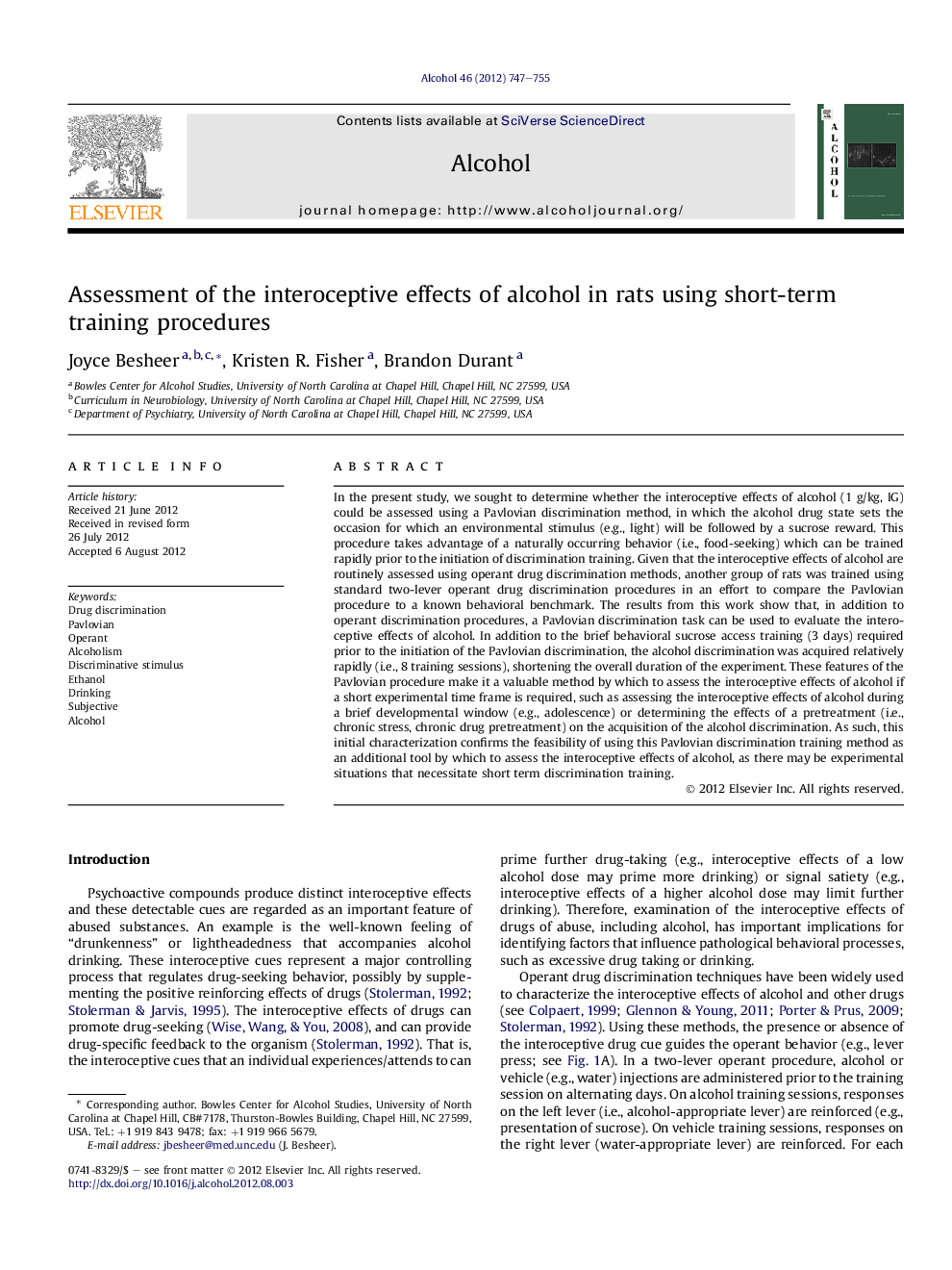| کد مقاله | کد نشریه | سال انتشار | مقاله انگلیسی | نسخه تمام متن |
|---|---|---|---|---|
| 1067394 | 948887 | 2012 | 9 صفحه PDF | دانلود رایگان |

In the present study, we sought to determine whether the interoceptive effects of alcohol (1 g/kg, IG) could be assessed using a Pavlovian discrimination method, in which the alcohol drug state sets the occasion for which an environmental stimulus (e.g., light) will be followed by a sucrose reward. This procedure takes advantage of a naturally occurring behavior (i.e., food-seeking) which can be trained rapidly prior to the initiation of discrimination training. Given that the interoceptive effects of alcohol are routinely assessed using operant drug discrimination methods, another group of rats was trained using standard two-lever operant drug discrimination procedures in an effort to compare the Pavlovian procedure to a known behavioral benchmark. The results from this work show that, in addition to operant discrimination procedures, a Pavlovian discrimination task can be used to evaluate the interoceptive effects of alcohol. In addition to the brief behavioral sucrose access training (3 days) required prior to the initiation of the Pavlovian discrimination, the alcohol discrimination was acquired relatively rapidly (i.e., 8 training sessions), shortening the overall duration of the experiment. These features of the Pavlovian procedure make it a valuable method by which to assess the interoceptive effects of alcohol if a short experimental time frame is required, such as assessing the interoceptive effects of alcohol during a brief developmental window (e.g., adolescence) or determining the effects of a pretreatment (i.e., chronic stress, chronic drug pretreatment) on the acquisition of the alcohol discrimination. As such, this initial characterization confirms the feasibility of using this Pavlovian discrimination training method as an additional tool by which to assess the interoceptive effects of alcohol, as there may be experimental situations that necessitate short term discrimination training.
Journal: Alcohol - Volume 46, Issue 8, December 2012, Pages 747–755